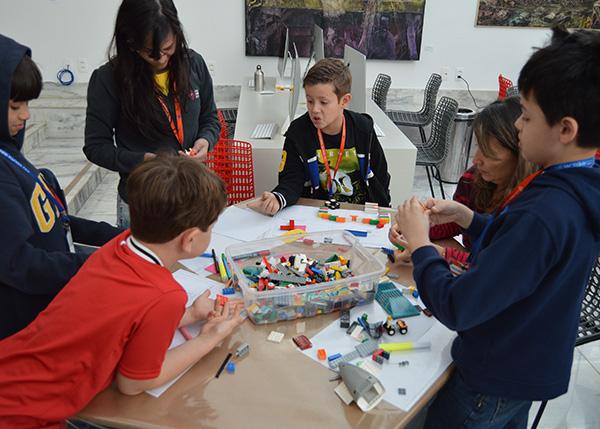
There are great ways for kids to spend their time off from school. If the activities enable participants to use their
creativity to self-express, tinker, and learn new skills, it’s even better. Last month, the Binational Center Casa Thomas
Jefferson, in coordination with the U.S. Embassy, offered the community the chance to do just that. Youth Innovation
Camp, Casa Thomas Jefferson’s very first summer camp, motivated participants to come to the main branch for five days
and experience different learning possibilities. The themes varied from inventions, entrepreneurship, coding, 3D printing,
making, and STEAM. Participants had a great time working collaboratively to learn how to make something new or learn a new
concept.
The Youth Innovation Camp welcomed participants from 9 to 12 years old to immerse in experiential learning and use English as a means of communication and collaboration. With this post, we start sharing all the activities developed during the camp.
The sessions had really positive feedback from parents and students. The “young incubator” was one of the highlights. For inspiration, the design team at Casa Thomas Jefferson referred to Entrepreneur Incubator – a curriculum that provides all the instructions and guidance necessary for American Spaces to lead programs on the entrepreneurial process. The material, originally designed by the Smithsonian Institution, provides participants with relevant experiences and skills so they are better prepared to start their own businesses. However, the material was written for native English speakers. So, adapting the material was crucial for the success of this activity during the camp.
Having a young audience in mind, CTJ team adapted lesson plans to keep kids tuned. The Smithsonian material used as reference is based on content pyramids, and each of the five Content Pyramids focuses on a different theme that is integral to the entrepreneurial process. For the activity designed for the Youth Innovation Camp, we focused on the Development Content Pyramid. Each Concept section teaches business fundamentals while challenging participants to create sketches of their original product ideas.
ACTIVITY OVERVIEW
See detailed lesson plan here.
Mentors thought a strong lead-in was needed; and the door in was having campers explore Google Cardboard, which is a relatively new way to experience virtual reality in a simple, fun, and affordable way. Participants were very curious and energized, so we were ready to explore important concepts;
We explored the product (Google Cardboard), its innovative features behind the concept of the product, and the brand GOOGLE itself. We analyzed demographics, aesthetic, innovative feature, core audience, mission statement, logo, etc. Having all students on board, we moved on to a brainstorm session. We had participants call out names of innovative and successful companies (e.g., Twitter, BMW, Red Bull), and for that we made a list of those brands on a large sheet of paper and posted it on a very visible area.
We moved on to a part of the lesson that kids enjoyed tremendously. We divided the campers into groups of three. Each group received two cards with two of the listed brands on them. Participants had to choose one to represent the brand and another to define the product they were supposed to create. For example: McDonalds x Nike – participants had to think of sneakers to be sold at McDonalds or a snack to be sold by Nike. Each group worked collaboratively to define aspects such as product description, differential, distinguishing feature, and logo.
Sarah - Maker, 31/Jul/2024